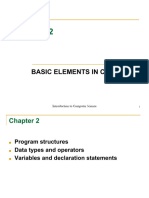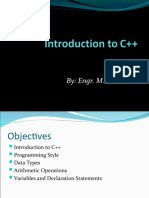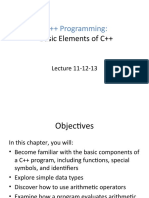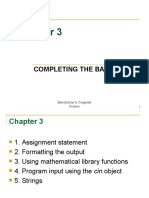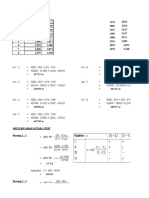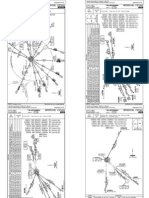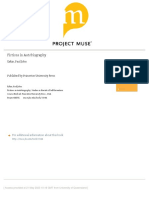0% found this document useful (0 votes)
101 views16 pagesImperative Programming: Introduction To C++
This document contains notes from a lecture on imperative programming and an introduction to C++. The lecture covers the basic parts of a C++ program, input/output objects like cout and cin, variables, arithmetic operators, and an example program that prompts the user for input and performs calculations. Students are given an exercise to convert a math algorithm into a C++ program to practice these concepts.
Uploaded by
numbers worldCopyright
© © All Rights Reserved
We take content rights seriously. If you suspect this is your content, claim it here.
Available Formats
Download as PDF, TXT or read online on Scribd
0% found this document useful (0 votes)
101 views16 pagesImperative Programming: Introduction To C++
This document contains notes from a lecture on imperative programming and an introduction to C++. The lecture covers the basic parts of a C++ program, input/output objects like cout and cin, variables, arithmetic operators, and an example program that prompts the user for input and performs calculations. Students are given an exercise to convert a math algorithm into a C++ program to practice these concepts.
Uploaded by
numbers worldCopyright
© © All Rights Reserved
We take content rights seriously. If you suspect this is your content, claim it here.
Available Formats
Download as PDF, TXT or read online on Scribd
/ 16



















